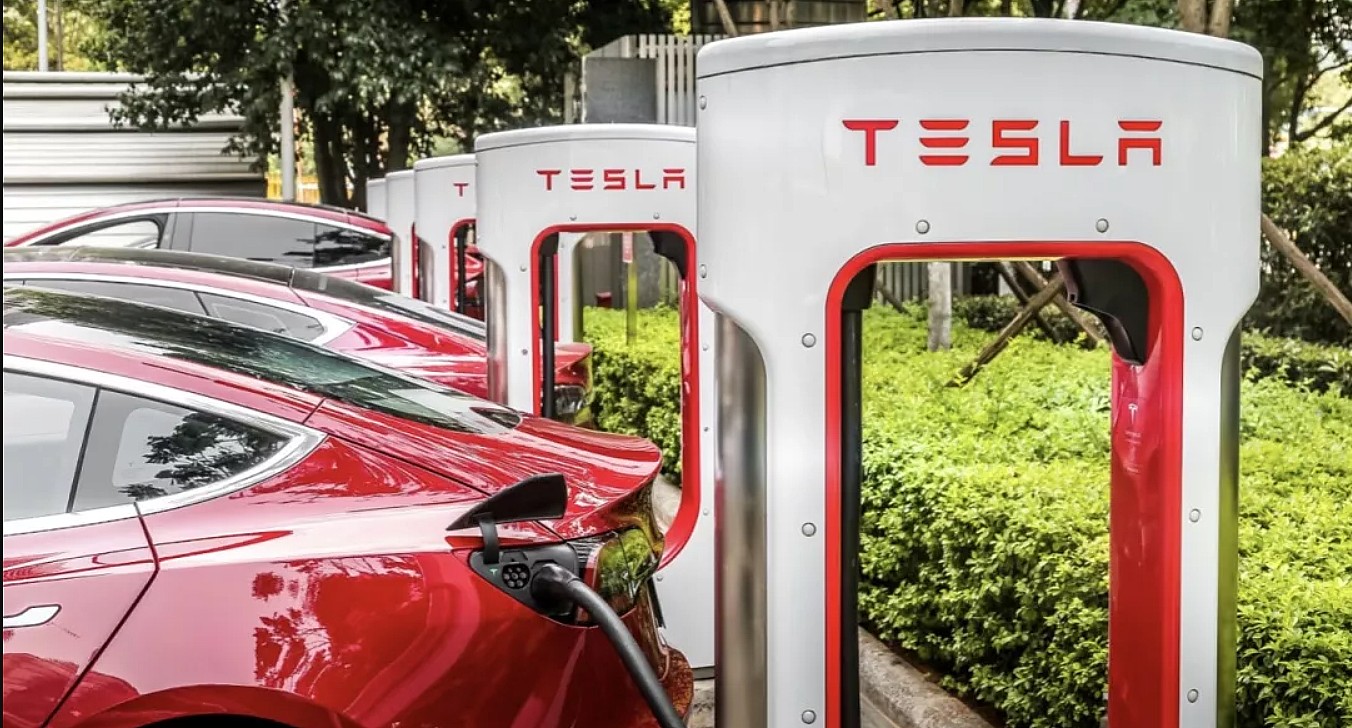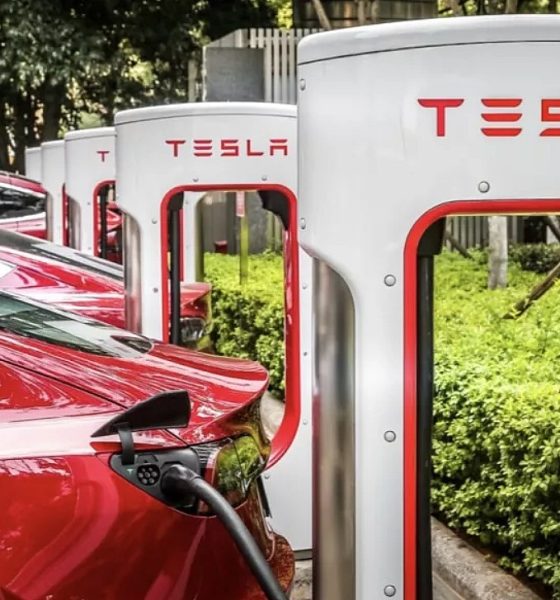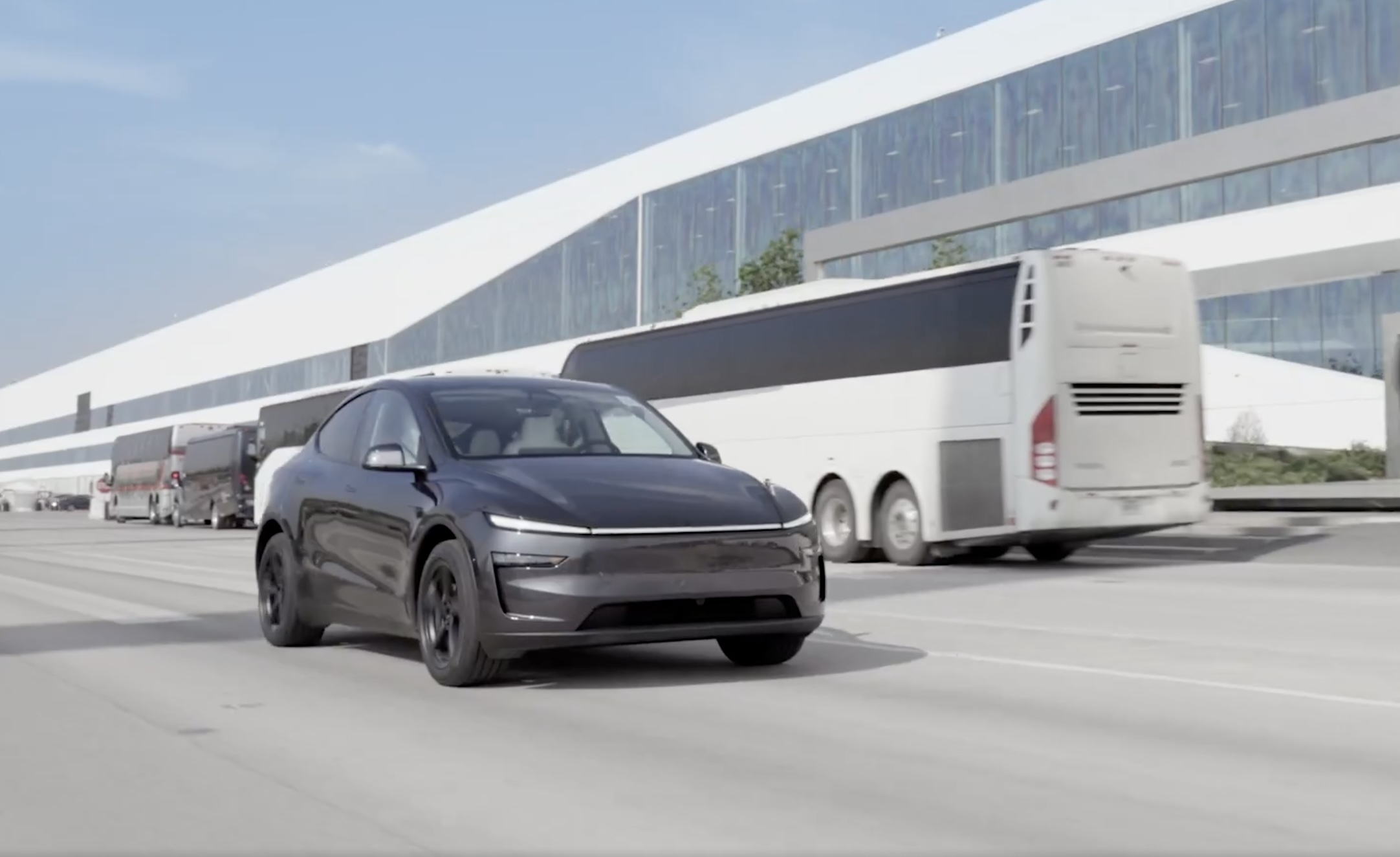

Investor's Corner
Tesla highlights Morgan Stanley’s EV sector strengths by outselling OEM competitors
Tesla (NASDAQ: TSLA) highlights a new Morgan Stanely note that reveals a slowly developing and recovering combustion engine sector, along with growing electric vehicle numbers compared to 2020. The note, headed by analyst Adam Jonas, reflects Tesla’s strengths in a sector that is still growing but becoming more concentrated and competitive nearly every quarter as OEMs fight to dethrone the undisputed champion of the EV sector.
Examining figures out of the traditional dealership model indicates that consumers may be dealing with automotive inflation, which could contribute to low-end sales and inventory figures despite strong demand. Jonas writes that selling days were up one day to 27 total days this year in July, compared to 26 days in 2020. However, inventory is “hovering at record low levels,” with three fewer days of supply than last year. Some OEMs are struggling with even larger deficits, however. Ford is estimated to have 36 days of inventory, down 50% compared to last year’s 72 days of inventory. Stallantis is down to 35 days from 60 days last year.
The root cause of the drop could be attributed to several factors, including the ongoing semiconductor shortage that continues to stump automakers. Basic features like “push-to-start” in ICE cars are being eliminated to conserve semiconductor chips. Additionally, a transition in the preferred powertrain of consumers may also be happening, based on Tesla’s increasing sales data points, which include nominal sales, total market share, EV sector penetration, and basic sales figures.
Morgan Stanley on Autos & Shared Mobility ??
“Tesla nominal sales estimated to have grown +66% y/y”
“Tesla’s 26,200 estimated US sales compares to the rest of the OEM BEV
US sales of 14,379. Tesla appears to be outselling the rest of the OEMs in
BEVs by ~1.8x.”$TSLA pic.twitter.com/FvnqhXxPsx— David Tayar (@davidtayar5) August 4, 2021
Jonas said in the note that total industry sales on a selling day for ICE vehicles were +0.8% year-over-year, while BEV sales were up +98.5% year-over-year.
Tesla continues to be the EV maker with the most impressive sales statistics. In July, Tesla’s estimated 26,200 U.S. sales outshine the 14,379 total BEV sales from OEMs during the month. Outselling the world’s largest automakers by around 1.8x, it is no surprise Tesla continues to help grow the sector altogether, achieving the well-known company goal of “accelerating the world’s transition to sustainable energy.”
July 2021’s BEV penetration was 3.1%, nearly double that of the same month last year at 1.6%. With more competitors and models from other manufacturers in the United States, especially with the Chevy Bolt EV and Ford Mustang Mach-E, Tesla’s market share has decreased from 80% last year to just 65% in 2021, still making up the majority of U.S. EV sales. The increased competition is not unwelcomed, especially as the concentration of the EV sector is continuing to grow at a rate that should have ICE manufacturers slightly concerned.
After reporting the best quarter in company history in production and deliveries in Q2, Tesla extended its streak of profitable quarters to eight straight after beating Wall Street consensus estimates. With the emerging EV sector in the United States, Tesla is at the forefront and outsells competing automakers at a generous rate. The company’s robust July sales figures point toward more domination from Elon Musk’s company, while OEM figures show promise moving forward.
Disclosure: Joey Klender is a TSLA Shareholder.
Don’t hesitate to contact us with tips! Email us at tips@teslarati.com, or you can email me directly at joey@teslarati.com.

Investor's Corner
Tesla stock lands elusive ‘must own’ status from Wall Street firm

Tesla stock (NASDAQ: TSLA) has landed an elusive “must own” status from Wall Street firm Melius, according to a new note released early this week.
Analyst Rob Wertheimer said Tesla will lead the charge in world-changing tech, given the company’s focus on self-driving, autonomy, and Robotaxi. In a note to investors, Wertheimer said “the world is about to change, dramatically,” because of the advent of self-driving cars.
He looks at the industry and sees many potential players, but the firm says there will only be one true winner:
“Our point is not that Tesla is at risk, it’s that everybody else is.”
The major argument is that autonomy is nearing a tipping point where years of chipping away at the software and data needed to develop a sound, safe, and effective form of autonomous driving technology turn into an avalanche of progress.
Wertheimer believes autonomy is a $7 trillion sector,” and in the coming years, investors will see “hundreds of billions in value shift to Tesla.”
A lot of the major growth has to do with the all-too-common “butts in seats” strategy, as Wertheimer believes that only a fraction of people in the United States have ridden in a self-driving car. In Tesla’s regard, only “tens of thousands” have tried Tesla’s latest Full Self-Driving (Supervised) version, which is v14.
Tesla Full Self-Driving v14.2 – Full Review, the Good and the Bad
When it reaches a widespread rollout and more people are able to experience Tesla Full Self-Driving v14, he believes “it will shock most people.”
Citing things like Tesla’s massive data pool from its vehicles, as well as its shift to end-to-end neural nets in 2021 and 2022, as well as the upcoming AI5 chip, which will be put into a handful of vehicles next year, but will reach a wider rollout in 2027, Melius believes many investors are not aware of the pace of advancement in self-driving.
Tesla’s lead in its self-driving efforts is expanding, Wertheimer says. The company is making strategic choices on everything from hardware to software, manufacturing, and overall vehicle design. He says Tesla has left legacy automakers struggling to keep pace as they still rely on outdated architectures and fragmented supplier systems.
Tesla shares are up over 6 percent at 10:40 a.m. on the East Coast, trading at around $416.
Investor's Corner
Tesla analyst maintains $500 PT, says FSD drives better than humans now
The team also met with Tesla leaders for more than an hour to discuss autonomy, chip development, and upcoming deployment plans.

Tesla (NASDAQ:TSLA) received fresh support from Piper Sandler this week after analysts toured the Fremont Factory and tested the company’s latest Full Self-Driving software. The firm reaffirmed its $500 price target, stating that FSD V14 delivered a notably smooth robotaxi demonstration and may already perform at levels comparable to, if not better than, average human drivers.
The team also met with Tesla leaders for more than an hour to discuss autonomy, chip development, and upcoming deployment plans.
Analysts highlight autonomy progress
During more than 75 minutes of focused discussions, analysts reportedly focused on FSD v14’s updates. Piper Sandler’s team pointed to meaningful strides in perception, object handling, and overall ride smoothness during the robotaxi demo.
The visit also included discussions on updates to Tesla’s in-house chip initiatives, its Optimus program, and the growth of the company’s battery storage business. Analysts noted that Tesla continues refining cost structures and capital expenditure expectations, which are key elements in future margin recovery, as noted in a Yahoo Finance report.
Analyst Alexander Potter noted that “we think FSD is a truly impressive product that is (probably) already better at driving than the average American.” This conclusion was strengthened by what he described as a “flawless robotaxi ride to the hotel.”
Street targets diverge on TSLA
While Piper Sandler stands by its $500 target, it is not the highest estimate on the Street. Wedbush, for one, has a $600 per share price target for TSLA stock.
Other institutions have also weighed in on TSLA stock as of late. HSBC reiterated a Reduce rating with a $131 target, citing a gap between earnings fundamentals and the company’s market value. By contrast, TD Cowen maintained a Buy rating and a $509 target, pointing to strong autonomous driving demonstrations in Austin and the pace of software-driven improvements.
Stifel analysts also lifted their price target for Tesla to $508 per share over the company’s ongoing robotaxi and FSD programs.
Investor's Corner
Tesla wins $508 price target from Stifel as Robotaxi rollout gains speed
The firm cited meaningful progress in Tesla’s robotaxi roadmap, ongoing Full Self-Driving enhancements, and the company’s long-term growth initiatives.

Tesla received another round of bullish analyst updates this week, led by Stifel, raising its price target to $508 from $483 while reaffirming a “Buy” rating. The firm cited meaningful progress in Tesla’s robotaxi roadmap, ongoing Full Self-Driving enhancements, and the company’s long-term growth initiatives.
Robotaxi rollout, FSD updates, and new affordable cars
Stifel expects Tesla’s robotaxi fleet to expand into 8–10 major metropolitan areas by the end of 2025, including Austin, where early deployments without safety drivers are targeted before year-end. Additional markets under evaluation include Nevada, Florida, and Arizona, as noted in an Investing.com report. The firm also highlighted strong early performance for FSD Version 14, with upcoming releases adding new “reasoning capabilities” designed to improve complex decision-making using full 360-degree vision.
Tesla has also taken steps to offset the loss of U.S. EV tax credits by launching the Model Y Standard and Model 3 Standard at $39,990 and $36,990, Stifel noted. Both vehicles deliver more than 300 miles of range and are positioned to sustain demand despite shifting incentives. Stifel raised its EBITDA forecasts to $14.9 billion for 2025 and $19.5 billion for 2026, assigning partial valuation weightings to Tesla’s FSD, robotaxi, and Optimus initiatives.
TD Cowen also places an optimistic price target
TD Cowen reiterated its Buy rating with a $509 price target after a research tour of Giga Texas, citing production scale and operational execution as key strengths. The firm posted its optimistic price target following a recent Mobility Bus tour in Austin. The tour included a visit to Giga Texas, which offered fresh insights into the company’s operations and prospects.
Additional analyst movements include Truist Securities maintaining its Hold rating following shareholder approval of Elon Musk’s compensation plan, viewing the vote as reducing leadership uncertainty.
@teslarati Tesla Full Self-Driving yields for pedestrians while human drivers do not…the future is here! #tesla #teslafsd #fullselfdriving ♬ 2 Little 2 Late – Levi & Mario








